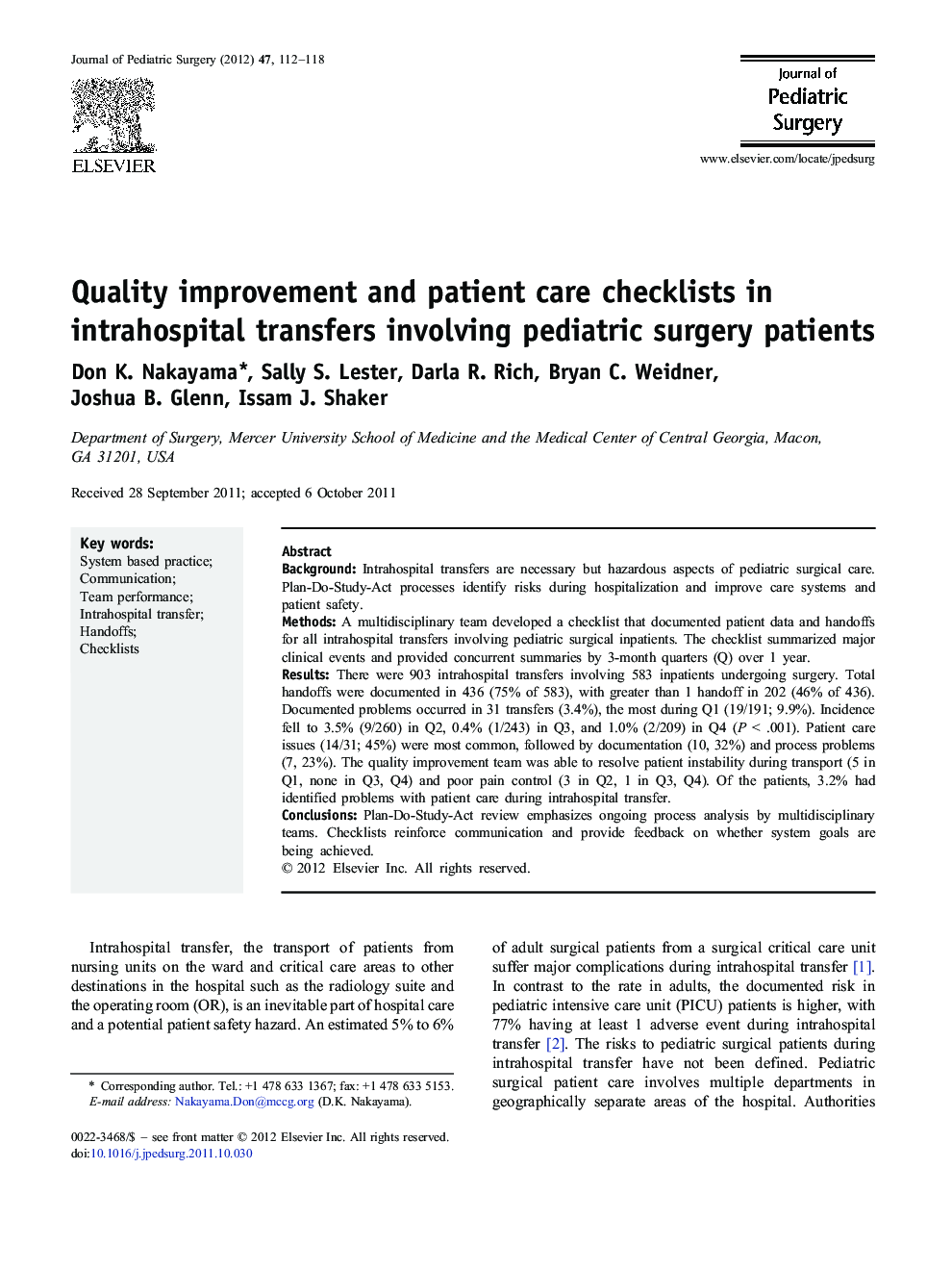| Article ID | Journal | Published Year | Pages | File Type |
|---|---|---|---|---|
| 4156753 | Journal of Pediatric Surgery | 2012 | 7 Pages |
BackgroundIntrahospital transfers are necessary but hazardous aspects of pediatric surgical care. Plan-Do-Study-Act processes identify risks during hospitalization and improve care systems and patient safety.MethodsA multidisciplinary team developed a checklist that documented patient data and handoffs for all intrahospital transfers involving pediatric surgical inpatients. The checklist summarized major clinical events and provided concurrent summaries by 3-month quarters (Q) over 1 year.ResultsThere were 903 intrahospital transfers involving 583 inpatients undergoing surgery. Total handoffs were documented in 436 (75% of 583), with greater than 1 handoff in 202 (46% of 436). Documented problems occurred in 31 transfers (3.4%), the most during Q1 (19/191; 9.9%). Incidence fell to 3.5% (9/260) in Q2, 0.4% (1/243) in Q3, and 1.0% (2/209) in Q4 (P < .001). Patient care issues (14/31; 45%) were most common, followed by documentation (10, 32%) and process problems (7, 23%). The quality improvement team was able to resolve patient instability during transport (5 in Q1, none in Q3, Q4) and poor pain control (3 in Q2, 1 in Q3, Q4). Of the patients, 3.2% had identified problems with patient care during intrahospital transfer.ConclusionsPlan-Do-Study-Act review emphasizes ongoing process analysis by multidisciplinary teams. Checklists reinforce communication and provide feedback on whether system goals are being achieved.
